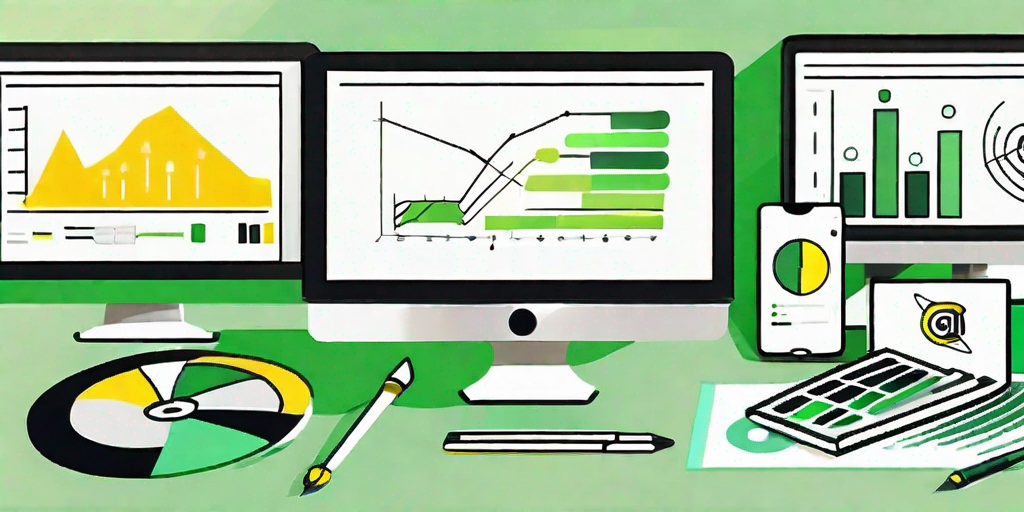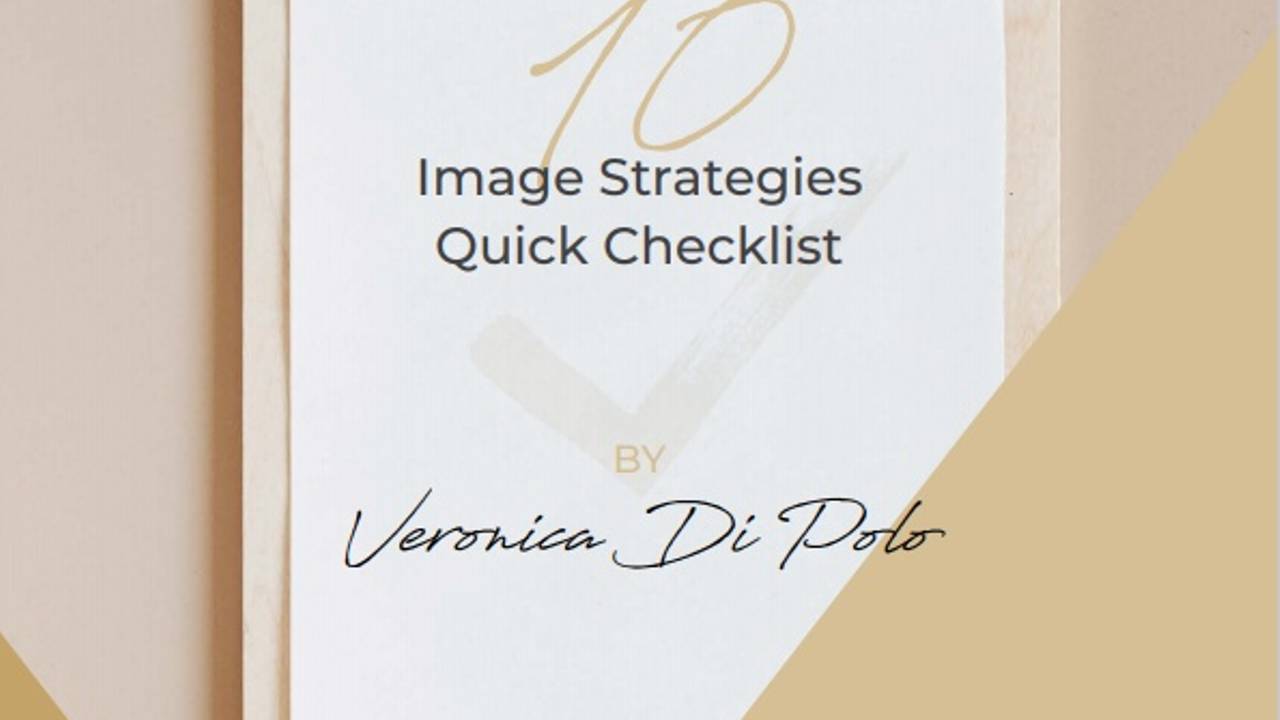Graphic design is a powerful medium that combines creativity with communication. One of the resources designers have at their disposal is imago images. These images can elevate a project, turning ordinary designs into stunning visual experiences. In this blog post, we’ll explore ten effective strategies graphic designers can use to incorporate imago images into their projects. Whether you’re a beginner or a seasoned professional, these tips will enhance your design process and help you create captivating visuals.
Understanding Imago Images

Imago images go beyond the standard stock photos you might come across online. They are unique visuals that encapsulate a story, emotion, or idea, making them an incredibly potent tool for graphic designers. The term "imago" often refers to images that evoke a deep recognition or feeling, drawing viewers into the narrative behind the visuals.
Here are a few key points to understand about imago images:
- Emotional Resonance: Imago images resonate with audiences on an emotional level. They are crafted to elicit feelings, making them more impactful than generic images.
- Storytelling Potential: These images are often rich in context and can communicate complex ideas quickly. A single imago image can tell a story that text might struggle to convey.
- Visual Hierarchy: When used appropriately, imago images can enhance visual hierarchy in your design, directing the viewer's attention where you want it.
- Brand Identity: Incorporating imago images that reflect your brand’s values and identity can strengthen recognition and engagement with your audience.
By understanding what imago images are and how they function, designers can utilize them to enhance their projects effectively. With the right strategies, you can make your designs more compelling, memorable, and meaningful.
Also Read This: Follow This Easy Guide for Beginners on How to Use Streamable
3. Benefits of Using Imago Images

When it comes to graphic design, the right imagery can make all the difference. Imago images provide a rich source of visual content that can elevate your projects in numerous ways. Here are some compelling benefits of using Imago images:
- High-Quality Visuals: Imago images are curated to provide high-resolution and professional-quality visuals. This ensures your designs don’t just look good; they look stunning, helping to create a lasting impression.
- Diverse Selection: Whether you're looking for abstract art, landscapes, or people, Imago boasts a wide variety of images. This wide range allows you to find the perfect image that matches the aesthetics and message of your project.
- Time-Saving: Instead of spending hours taking photos or creating your own graphics, using Imago images provides you instant access to a trove of visuals. This can significantly speed up your workflow and allow more time for creativity and design.
- Licensing Ease: Imago images typically come with user-friendly licensing agreements, making it hassle-free to use images in your projects without worrying about copyright issues.
- Enhancing Brand Identity: By selecting images that resonate with your brand's values and aesthetics, you can reinforce your brand identity. Imago images can complement your messaging and make your designs more relatable to your audience.
By leveraging these benefits, graphic designers can take their projects to new heights, achieving not only visual appeal but also functional effectiveness.
Also Read This: Guide to Creating a PDF from Multiple Images
4. Tip 1: Choosing the Right Images
Selecting the right images from Imago can be one of the most critical steps in your design process. Here are some essential tips to guide you:
- Know Your Audience: Before diving into your image search, take a moment to understand who your target audience is. Consider their preferences, interests, and what visuals resonate with them. Tailoring your image choices to their tastes can significantly enhance engagement.
- Define Your Theme: What’s the overall theme of your project? Whether it’s minimalist, vibrant, or retro, identifying your theme will help filter your search and lead you to images that fit seamlessly into your design.
- Quality Over Quantity: It might be tempting to choose many images for your project, but remember that less is often more. A few carefully chosen, high-quality images can make a more impactful statement than a collection of mediocre visuals.
- Consistent Style: Ensure that the images you choose maintain a consistent style throughout your project. This could mean using similar color palettes, subject matter, or graphic approaches to create a harmonious design.
- Use of Space: Consider how the image will fit within your layout. Look for images that provide negative space if you need to incorporate text or other design elements. This ensures that your visuals support the overall composition rather than detract from it.
By keeping these factors in mind, you can ensure that you select Imago images that not only enhance your design but also connect with your audience effectively.
Also Read This: How to Change Username on Behance: Altering Your Profile Name for Better Branding
Tip 2: Integrating Imago Images into Branding
When it comes to branding, consistency is key. Imago images can serve as a visual backbone for your brand identity, reinforcing your message in a compelling way. But how do you effectively integrate these images into your overall branding strategy? Here are some ways to do just that:
- Identify Your Brand's Core Message: Before incorporating imago images, ensure you have a clear understanding of your brand's mission and values. Choose images that resonate with your core message.
- Consistent Color Palette: Pick imago images that align with your brand’s color scheme. This can help create a cohesive look across all platforms. For instance, if your brand represents tranquility, you might want to select softer, muted tones in your images.
- Adapt Images for Different Formats: Imago images can often be resized and adjusted. Make sure to tweak them for various branding needs—think social media headers, business cards, or even promotional materials.
- Leverage Iconography: Use imago images as part of your logo or iconography. This makes your branding more memorable and visually appealing.
By thoughtfully integrating imago images into your branding, you’re not just creating visual appeal; you’re also reinforcing your brand identity. This strategy can make your brand instantly recognizable and appealing to your target audience.
Also Read This: How to Resize an Image Without Stretching It to Maintain Proportions
Tip 3: Enhancing Social Media Graphics
In today’s visually-driven world, social media graphics are vital for capturing attention. Utilizing imago images can elevate your social media game and help your posts stand out. Here’s how you can enhance your social media graphics:
- High-Quality Visuals: Always choose high-resolution imago images. Blurry or low-quality pictures can detract from your message and professionalism.
- Combining Text and Image: Pair your imago images with catchy text or slogans. Use contrasting colors to ensure your text pops against the image.
- Storytelling: Use a series of related images to tell a story. This can engage your audience and encourage them to interact with your posts.
- Experiment with Layouts: Don’t be afraid to think outside the box! Try different layouts and compositions to see what resonates best with your audience.
By effectively using imago images in your social media graphics, you can create content that not only looks great but also engages and attracts your audience. So, go ahead and infuse your social media with stunning visuals that wow your followers!
Also Read This: How Difficult Is It to Make Money with Foap?: Everything You Need to Know
Tip 4: Creating Engaging Presentations
When it comes to presentations, visuals can make or break your message. Using Imago images effectively can transform a standard presentation into something truly engaging. Here are some strategies to consider:
- Choose Relevant Images: Make sure the images you select align with the theme of your presentation. This creates a cohesive look and reinforces your message.
- Use High-Quality Visuals: Poor-quality images can distract from your content. Opt for high-resolution Imago images that maintain clarity even in large formats.
- Balance Text and Images: Avoid cluttering your slides with too much text. Utilize Imago images to convey your point visually, allowing the audience to focus on the key messages without being overwhelmed.
- Incorporate Infographics: Imago images often include infographics or data visualizations. Use these to simplify complex information and make it easier for your audience to grasp.
- Set the Tone: The style and mood of the images should complement the tone of your presentation. Whether you’re aiming for professional, playful, or dramatic, choose images that reflect that vibe.
Ultimately, the goal is to keep your audience engaged. By integrating Imago images thoughtfully, you can enhance your storytelling and make your presentations memorable.
Also Read This: How to Get Likes on Behance: Increasing Engagement with Your Projects
Tip 5: Designing Eye-Catching Marketing Materials
Marketing materials are crucial for making a strong impression on potential clients or customers. Imago images can significantly enhance these materials, helping them stand out. Here’s how to effectively use these visuals in your designs:
- Consistent Branding: Ensure that the images you choose align with your brand's identity. Maintain consistent colors, styles, and themes to reinforce brand recognition.
- Highlight Key Messages: Use Imago images strategically to draw attention to important information. For instance, place a powerful image next to a catchy tagline or offer to boost engagement.
- Limit Color Palette: Select images that complement your overall color scheme. A harmonious blend of images and branding colors can create a more appealing visual experience.
- Create Visual Hierarchy: Use size and placement of Imago images to create a sense of hierarchy. Larger images can attract attention, while smaller ones can provide additional context without overwhelming the design.
- Incorporate Call-to-Actions (CTAs): Position images near your CTAs to encourage interaction. An eye-catching Imago image can enhance a compelling invitation to action.
By combining these strategies, you can design marketing materials that not only capture attention but also encourage potential clients to take action. Remember, the right image can say a thousand words, so choose wisely!
Also Read This: How to Update Your YouTube Video Effectively
Tip 6: Customizing Images for Unique Projects
When it comes to graphic design, one of the best ways to stand out is by customizing your imagery. Imago images can serve as a fantastic foundation for your projects, but personalizing them can create a unique twist that captivates your audience.
Here are some simple yet effective strategies for customizing Imago images:
- Adjusting Colors: Use tools like Photoshop or Illustrator to modify the color palette of an image. Changing tones can evoke different emotions and fit your project's theme perfectly. Try using hue adjustments, saturation tweaks, or filters!
- Adding Textures: Layer in textures to give depth to your images. This technique can enhance the visual interest and make your design feel more tactile and engaging.
- Transforming Shapes: Don't hesitate to crop, rotate, or resize elements of the image. Altering shapes can create a more compelling composition that aligns with your design goals.
- Incorporating Elements: Blend other graphic elements, like icons or patterns, into your images. This approach allows you to create a cohesive visual story that corresponds to your branding.
- Sharpening Focus: Highlight specific areas of an image by adjusting its focus. This can guide the viewer's attention and emphasize your key messages.
Remember, the goal of customizing Imago images is to enhance your project and make it uniquely yours. It’s all about experimentation—don't be afraid to try different techniques until you find the perfect fit!
Also Read This: How to Use Behance for Beginners – Essential Features and Tips
Tip 7: Utilizing Imago Images for Website Design
In the fast-paced digital world, first impressions matter significantly. Utilizing Imago images effectively can not only boost aesthetics but also improve user experience on websites. Here's how to incorporate these images in your web design projects:
1. Hero Images: Use high-quality Imago images as hero images on your landing pages. These striking visuals can instantly grab attention and convey your website's message.
2. Background Elements: Consider using Imago images as background elements. Subtle patterns or faded images can add depth while keeping the focus on your content.
3. Visual Storytelling: Use a series of Imago images to tell a story throughout your website. This technique can engage visitors and guide them through your brand narrative seamlessly.
4. Icons and Illustrations: Customize Imago images to create distinctive icons or illustrations for your site. Consistent styling can unify your design and make it more memorable.
5. Call-to-Actions: Apply Imago images strategically in your call-to-action (CTA) buttons or sections. A well-placed image can enhance the urgency or appeal of your CTA, encouraging user engagement.
6. Responsiveness: Don’t forget to optimize Imago images for different devices. Ensure that images maintain quality and relevance on mobile, tablet, and desktop views.
In conclusion, leveraging Imago images effectively in website design can enhance visual appeal and functionality, making for a more enjoyable user experience.
Also Read This: DIY Kinder Joy Chocolate Creative Ideas on Dailymotion
Tip 8: Collaborating with Clients Using Imago’s Library
When it comes to graphic design, collaboration is key, and Imago’s library can serve as a fantastic tool in this process. Imagine you’re working on a project for a client and you need specific visuals to bring their vision to life. Instead of sifting through countless stock image websites, you can quickly tap into Imago’s expansive library.
Here’s how you can effectively collaborate with clients using Imago:
- Define the Project Scope: Start by discussing what the client needs. Clarifying the project’s goals will make it easier to find relevant images.
- Explore the Library Together: Schedule a collaborative session to browse Imago’s collection with your client. This way, you can gather their feedback in real-time.
- Save Favorites: As you discover images that resonate with the project, use Imago’s tagging and saving features to bookmark these finds for easy access later.
- Share Custom Collections: Create tailored collections based on client preferences. This not only streamlines the design process but also engages your client more actively.
By involving your clients in the image selection process, you ensure that the visuals align perfectly with their expectations, ultimately leading to a more satisfactory outcome. The collaborative effort can foster a more productive relationship, making them feel valued and heard.
Also Read This: Importing an Image Sequence into DaVinci Resolve
Tip 9: Ensuring Legal Compliance and Licensing
As a graphic designer, it’s paramount to ensure that the images you use comply with legal standards and licensing agreements. This protects you, your clients, and the original creators of the images. When using Imago’s library, there are a few simple steps you can take to ensure you’re covered.
Here are the key points to remember regarding licensing:
| Licensing Type | Description | Best Practices |
|---|---|---|
| Royalty-Free | Images can be used without paying royalties after the initial purchase. | Make sure to read the terms on how the image can be modified or used. |
| Rights-Managed | Usage of the image is restricted to certain conditions, often including time and geographic limits. | Keep all documentation on file to ensure compliance and refer back to it as needed. |
| Creative Commons | Images are free to use, but require proper attribution according to the creator's stipulations. | Always credit the creator as specified; failing to do so can lead to legal issues. |
By staying informed and adhering to these licensing guidelines, you can confidently use Imago images in your work. It’s not just about avoiding legal troubles; it’s about respecting the artists and creators behind the visuals. So, take the time to educate yourself on licensing, and make it a standard part of your design process!
Also Read This: Getting a YouTube Music License for Your Channel
Tip 10: Staying Ahead with Trends in Visual Design
Hey there, fellow designers! Keeping up with trends in visual design can often feel like chasing a moving target, but it's essential if you want to stay relevant and keep your work fresh. Let's delve into some effective strategies to help you stay on top of the latest trends in graphic design.
1. Follow Design Influencers: The Internet is full of design influencers who are at the forefront of visual trends. Platforms like Instagram, Pinterest, and Behance are gold mines for inspiration. Keep tabs on what top designers are creating, and don't hesitate to engage with them.
2. Join Design Communities: Participate in online forums and communities such as Dribbble, Reddit's design subreddits, or design Facebook groups. These platforms allow you to interact with other designers, share your work, and get feedback, all while keeping your finger on the pulse of design trends.
3. Subscribe to Design Magazines and Blogs: Websites like Creative Bloq, Smashing Magazine, and AIGA Eye on Design regularly post articles about emerging trends and innovative techniques. A subscription to a design magazine can also provide insights and inspiration.
4. Attend Webinars and Conferences: Virtual and in-person design conferences can expose you to new ideas, technologies, and trends that are shaping the industry. Workshops often provide practical experience that can spark your creativity.
5. Experiment with New Tools: Emerging design tools and software often come with features tailored to current trends. Commit some time to learn and experiment with these tools to see how they can enhance your projects.
By implementing these strategies, you'll not only keep your designs contemporary but also foster creativity in your work. So go ahead, embrace change, and let those trends inspire your next project!
Conclusion
In summary, utilizing Imago Images effectively in your graphic design projects requires a combination of thoughtful strategy, creativity, and trend awareness. Each of the ten tips we've discussed offers unique advantages that can elevate your design work. To recap:
- Understand the power of Imago Images: Recognizing how imagery impacts perception is fundamental.
- Choose relevant images: Always align your visuals with the message you want to convey.
- Stay consistent: Maintain a cohesive style across your projects for brand integrity.
- Experiment and pivot: Don’t hesitate to try different styles to see what resonates.
- Collaborate with photographers: Partnering with professionals can yield unique images.
- Leverage social media: Showcasing your work on various platforms can build your audience.
- Keep a design journal: Documenting your inspirations can guide you through blocks.
- Seek feedback: Constructive criticism can help you grow and refine your style.
- Use high-quality resources: Always source your images from trustworthy sites.
- Stay ahead of trends: Stay informed and adaptable to remain competitive in the industry.
As you integrate these strategies into your workflow, remember that design is as much about evolution as it is about creativity. So keep experimenting, keep learning, and let your passion shine through your work. Happy designing!
 admin
admin








